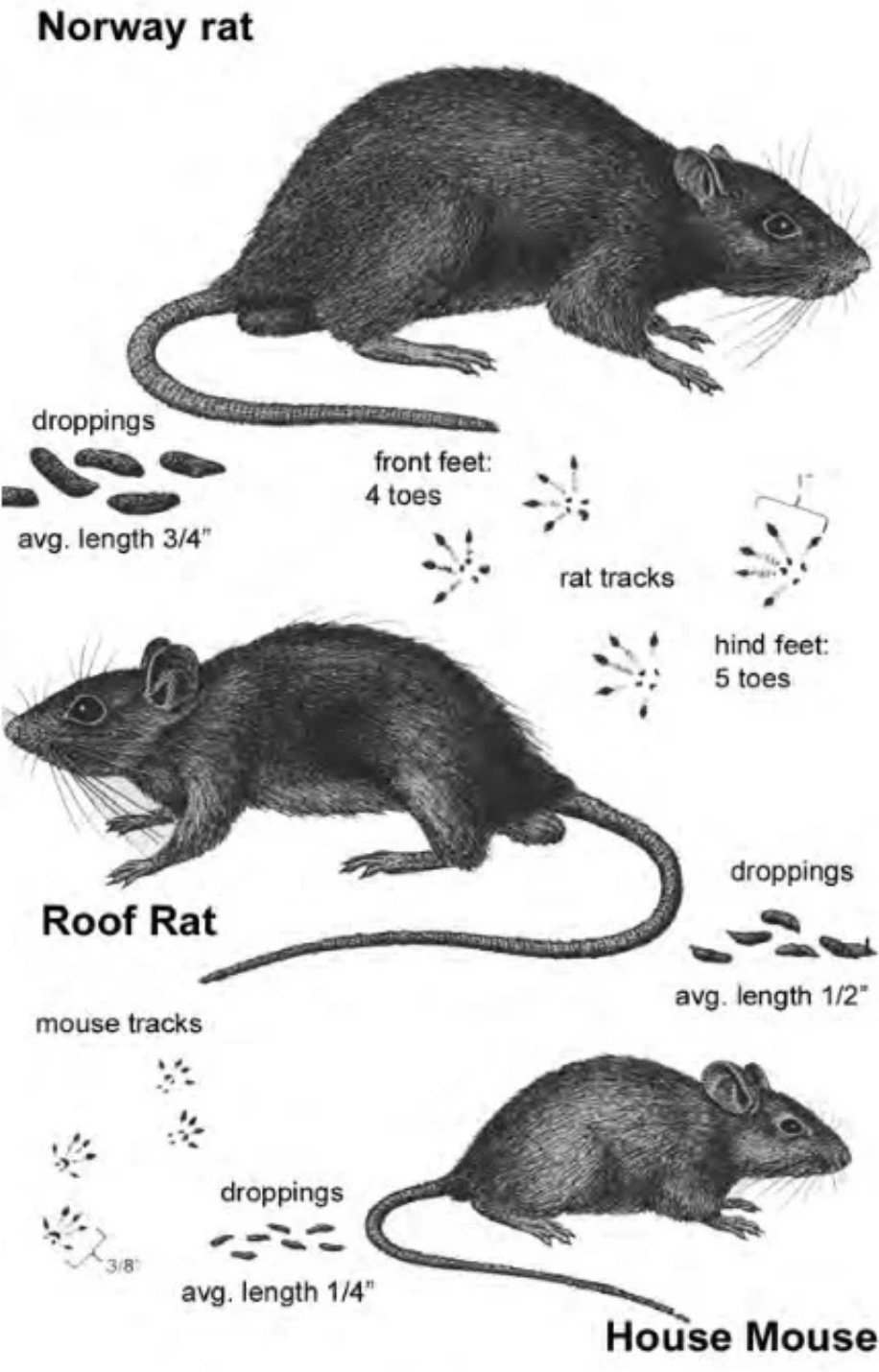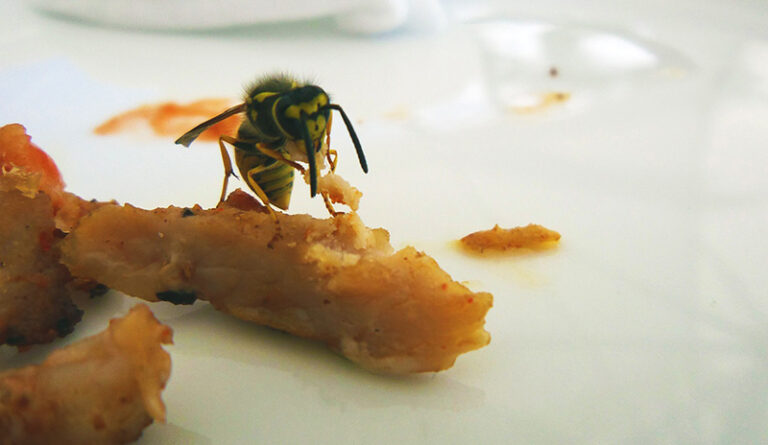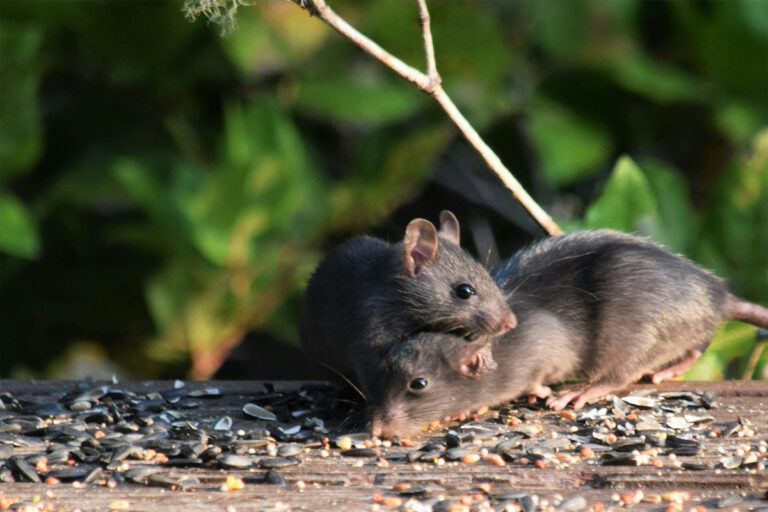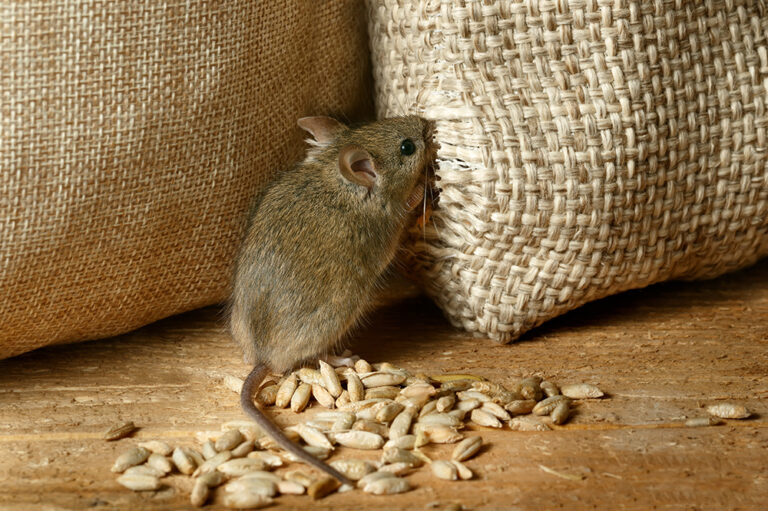Who’s the Intruder?
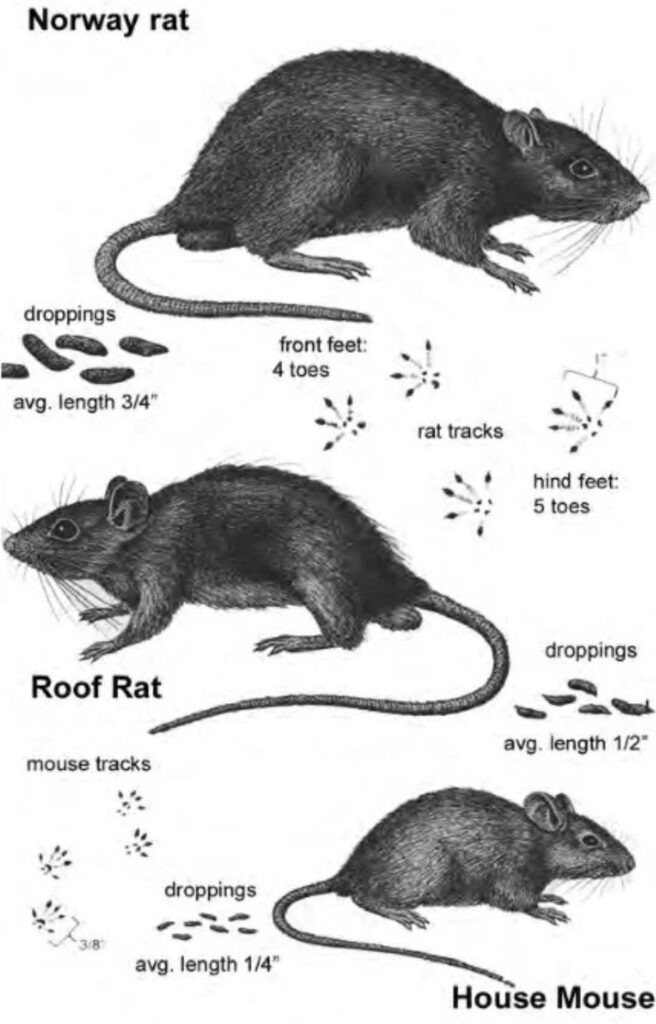
How to identify the type of rodent
Brown Rat (Norway Rat)
The largest of the UK rat breeds is the brown rat. With the colouring in the name, they are typically a shade of brown. Their tail is shorter than the head and body, with small eyes and ears. They typically weigh between 200.500g, and there dropping average 12mm, tapering to a point at one or both ends.
Black Rat (Roof Rat)
Despite the common name, the black rat can be either black, brown, or grey. Their tail is longer than the head and body, with noticeably large eyes and ears. They typically weigh between 100g-300g and their droppings average 9mm, thinner slightly curved with rounded ends.
House Mouse
The house mouse is two toned! The top of them tends to be grey/brown colour, whilst the underside is a darker black/grey colour. The tail is slightly shorter than the body, around 80% of the length of the body and head. They typically weigh between 14-20g and are around 180mm with droppings around 3-7mm, often tapering one or both ends.[Text Wrapping Break]
Wood Mouse (Field Mouse)
The wood mouse is less likely to be found in inner city houses and are more likely to be found in the countryside, in barns and farmhouses. They have a reddish tinge to their fur, with a white underside. The tail is the length of their body and head, with large eyes, ears, and hind feet. They typically weigh 13-27g and are smaller in length than the house mouse. Their droppings are similar looking to the house mouse but slightly brighter in colour.
Fun Facts!
- Rats can eat up to 10% of their body weight a day! They will eat around 10 meals a day from 2 or 3 feeding points where they feel safe and is familiar. Brown rats also need free water daily
- House mice eat up to 20% of their body weight a day! They are more sporadic eaters and can survive with no free water, as long as their food has 16% moisture content or more.
- Rats and mice incisors grow constantly so they have to gnaw to keep them filed down, which they do at a high speed of 6 times per second.
- Rats have a jaw power of 2000PSI, which allows them to gnaw through materials such as tin sheet and weak concrete.
- Rodents can’t regurgitate their food, however they have a gap behind incisors(diastema) enables them to spit out nonedible materials.
- Rats and mice memorize their environment by muscle movement. They do this so well, that when objects are removed from their territory, they will continue to move around them as if the objects are still there. This allows them to flee back to a safe space quickly when a predator appears.
- Rats mature at 2 months old, and usually live up to 2 years. Their gestation is only 22 days and can produce over 40 offspring a year.
- Mice mature at 5-6 weeks old, and usually live up to a year. Their gestation is around 19-20 days and also can produce over 40 offspring a year.
- Rats are mainly nocturnal and live underground, but they’re also great at climbing and swimming.
